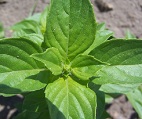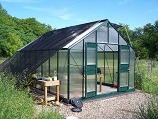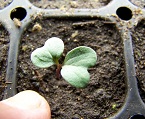The Weblog

…from Farm Where Life is Good
We’ll give you an insider’s view of life and growing on the farm. Share the excitement of a great harvest and experience the disappointment of a crop failure.
We have it all!
CSA Produce Subscription Distribution-- Week 37
This post expired on September 11, 2023.

Your box for Week 37!
Farm Where Life is Good
Produce Subscription (Week 37)
It’s all about the color RED in your boxes this week; ok, well green too, and yellow, oh and orange.
Melon, cantaloupe They are coming in strong; our little trick of propping them up on cups to keep the bugs and worms from eating thru the rind is working! Now we need to fine tune the ripeness index! 
Potatoes, German Butterball We need to work on size next year; we are guessing the drought has something to do with it. 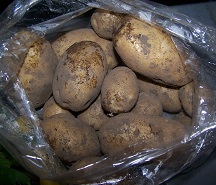
Lettuce, green summer crisp Finally some lettuce that made it thru this heat wave. More coming in the pipeline. 
Cucumber Slicers and a lonely muncher
Carrot We apologize again for ugly carrots. We are working on it (in growing, that means next season!) Sorry, they seem so simple, don’t they? 
Tomato, cherry variety The hightunnel tomatoes continue to amaze! 
Tomato, slicer/heirloom and paste variety Reminder— DO NOT refrigerate. Allow them to red-up at room temp. 
Sweet pepper variety Red is the theme! 2 standard red bells, 2 “apple” sweets (the pointy ones), and 2 Italia frying peppers (see below). Oh, and one regular ol’ green guy. Oh! and a handful of sweet orange lunchbox snackers! 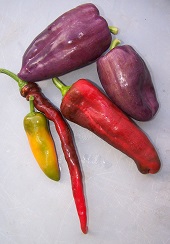
Peppers, Sweet Italia Wonderful Italian frying pepper. 
Pepper (Jalapeno) A little heat for you, just in case you are missing the 90 degree days already. Jalapeno Poppers all around! 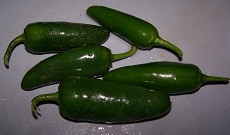
Onions, white Sweet little things. 
Leeks We didn’t let these fellas size-up, we need the space back (they were one of the first plantings in the first hightunnel position). So a handful of baby leeks for braising or grilling. 
Basil Spin up some pesto for the freezer; take it out on a wintery night and remember summer fondly. 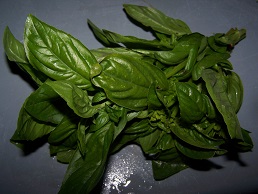
Cilantro It’s baaaack. Poor summer germination; nothing liked the high heat and dryness. 
Parsley I just love the bright citrus-y scent while harvesting this herb. It is full of lycopene (cancer prevention), so drop a sprig in your morning smoothie. 
Recipes for your consideration
Tony Mantuano created this recipe, from Food & Wine website, in homage to the Calçotada in Spain. The Catalan festival celebrates the harvest of calçots, which are slender onions similar to baby leeks. After peeling the charred outer layers, festival-goers dip the softened onions in a vibrant romesco sauce, which Mantuano makes with sweet red bell peppers. “It’s fantastic,” Mantuano recalls. “Everyone has black fingers from the char.”
Grilled Baby Leeks with Romesco Sauce
1 small ancho chile, seeded
3 tablespoons hazelnuts
Two 1/2-inch-thick slices baguette, toasted and torn into 1-inch pieces
3 tablespoons roasted almonds, preferably Marcona, coarsely chopped
1 garlic clove, chopped
2 plum tomatoes—peeled, seeded and coarsely chopped
1 roasted red pepper from a jar, cut into 1-inch pieces
1/2 tablespoon sherry vinegar
1/4 cup extra-virgin olive oil, plus more for brushing
1 tablespoon chopped flat-leaf parsley
Salt and freshly ground black pepper
16 baby leeks or thick scallions, trimmed
Light a grill. Preheat the oven to 350°. In a small heatproof bowl, cover the ancho with hot tap water and soak until softened, about 15 minutes. Drain.
Meanwhile, in a pie plate, toast the hazelnuts in the oven for about 10 minutes, or until fragrant and lightly browned. Let the hazelnuts cool, then transfer them to a kitchen towel and rub them together to remove the skins. Transfer the hazelnuts to a work surface and let cool completely, then coarsely chop.
In a food processor, combine the ancho with the hazelnuts, toasted baguette, almonds and garlic and process to a smooth paste. Add the tomatoes, roasted red pepper and vinegar and puree. With the machine on, slowly pour in the 1/4 cup of olive oil and process until blended and smooth. Scrape the romesco sauce into a bowl, stir in the parsley and season with salt and black pepper.
Brush the leeks with oil and season with salt and pepper. Grill over high heat until charred all over, about 3 minutes. Serve with the romesco sauce alongside.
Polenta is THE versatile staple. Seasoned nicely with leeks, you can eat it soft as described here; or you can spread the leftovers in a baking dish (1/2" thick) and let it cool. Cut it like brownies and store. You can fry it up for breakfast the next day!
2 tablespoons olive oil
3 large leeks (white and pale green parts only), thinly sliced
2 1/4 cups (or more) water
2 cups canned chicken broth
1 bay leaf
1 cup polenta
1/3 cup grated parmesan-flavor vegan topping (Galaxy Foods)
1 Tbsp margarine
Sauté leeks in olive oil over medium heat. Cover and cook until leeks soften, stirring occasionally, about 10 minutes. Add 2 1/4 cups water, broth and bay leaf.
Bring to boil. Gradually whisk in polenta. Reduce heat to medium-low and cook until mixture is thick and creamy, stirring often and thinning with more water if necessary, about 35 minutes.
Remove pan from heat. Discard bay leaf. Stir in 1 tablespoon margarine and Parmesan cheese. Season polenta to taste with salt and pepper.
Divide polenta among plates.
Adaped from Bon Appétit
For Your Reading Pleasure
The Union of Concerned Scientists (UCS) is, as it says on their Web site, “…an independent nonprofit alliance of 50,000 concerned citizens and scientists across the country. We augment rigorous scientific analysis with innovative thinking and committed citizen advocacy to build a cleaner, healthier environment and a safer world.”
Recently, they did a little project, which is discussed in detail in the book The Consumer’s Guide to Effective Environmental Choices by Brower and Leon. They determined the most pressing environmental concerns which consumer choice could impact. (Nuclear waste, for example, didn’t make it on the list because there is very little an individual consumer choice can change.) The top-ranked categories were: Global Warming, Air Pollution, Water Pollution, and Habitat Alteration.
Next, they created a model of the US economy, linking these problems with 134 different categories of consumer spending which were grouped into 50 larger categories like Dairy Products, or Personal Items and Services. Then they ranked the consumer choices twice: per household, and per dollar of expenditure.
And a surprising picture emerged. Seven of the 50 large categories produced the majority of the damage in all of those areas. These categories were, in roughly descending order of damage:
1. Cars and light trucks
2. Meat and poultry
3. Fruit, vegetables, and grains
4. Home heating, hot water, and air conditioning
5. Household appliances and lighting
6. Home construction
7. Household water and sewage
It’s interesting to note what’s not on the list, for example: toxic cleaning supplies, paper or plastic bags, cloth or disposable diapers, disposable cups, synthetic fabrics, and Styrofoam cups. These items, they found, either had an alternative that was not clearly better or worse, or were used in such small amounts that the impact was tiny in comparison.
They identify 11 actions that will have the most impact on decreasing the environmental impact of these seven areas:
1. Choose a place to live that reduces the need to drive
2. Think twice before purchasing another car
3. Choose a fuel-efficient, low-polluting car
4. Set concrete goals for reducing your travel
5. Whenever practical, walk, bicycle, or take public transportation
6. Eat less meat
7. Buy organic/sustainable produce
8. Choose your home carefully
9. Reduce the environmental costs of heating and hot water (for example, wash clothes in cold water, as 90% of the energy usage in a washing machine is heating the water)
10. Install efficient lighting and appliances
11. Choose an electricity supplier offering renewable energy.
Check out this book, The Consumer’s Guide to Effective Environmental Choices, to see what you can do to change the world for the better.
Farm News

Our CSA for the native pollinators! It’s buckwheat this week; and all you got was tomatoes.
We would love some feedback on the tomato varieties. Not being tomato-connoisseurs ourselves makes selection each year a challenge. So if you have some thoughts on the cherry tomatoes or the paste or slicers or heirlooms, please let us know.
Have a wonderful week, and enjoy the vegetables.
Roger and Lara

